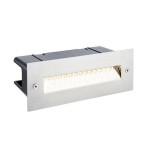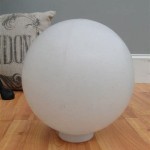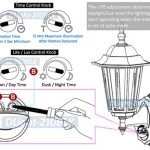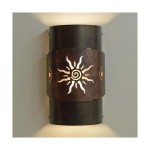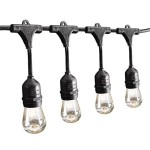Outdoor Landscape LED Lighting Ideas
Outdoor landscape LED lighting serves both practical and aesthetic purposes. It enhances safety by illuminating pathways and potential hazards, while simultaneously accentuating the architectural features of a residence and the beauty of the surrounding landscape. LED technology provides a durable, energy-efficient, and versatile lighting solution, making it a preferred choice for many homeowners.
Careful planning is crucial for effective landscape lighting. Considerations should include the specific features to be highlighted, the desired ambiance, and the overall architectural style of the property. A well-designed lighting scheme can transform an ordinary outdoor space into an inviting and visually appealing environment, extending its usability well into the evening hours.
Highlighting Architectural Features
Uplighting is a common technique used to emphasize the vertical elements of a house, such as columns, gables, and unique wall textures. By positioning LED spotlights at the base of these features and directing the light upwards, a dramatic and visually striking effect can be achieved. The intensity and color temperature of the light should be carefully selected to complement the building's material and color palette.
Downlighting, conversely, involves mounting lights higher up, such as under eaves or in trees, and directing the light downwards. This technique can create a soft, diffused glow that mimics natural moonlight, adding a sense of warmth and serenity to the outdoor space. Downlighting is particularly effective for illuminating walkways and patios, providing ambient light without harsh glare.
Wall washing is another approach that involves using broad beams of light to evenly illuminate a large wall surface. This technique is particularly effective for highlighting textured walls or architectural details that might otherwise be lost in the darkness. The spacing of the lights should be carefully considered to ensure even coverage and avoid creating dark spots or shadows.
Silhouetting involves placing a light source behind an object, such as a statue or a tree, to create a striking silhouette effect. This technique is most effective when the object has a distinct shape or form that will be easily recognizable in its silhouette. The light source should be positioned low to the ground and directed upwards to create a dramatic outline against the night sky.
Path lighting is essential for safety and navigation, particularly along walkways, driveways, and steps. LED path lights are available in a variety of styles and finishes, ranging from traditional to contemporary, and should be chosen to complement the overall aesthetic of the landscape. The spacing of the lights should be sufficient to provide adequate illumination without creating excessive glare.
Enhancing Garden Features
Garden lighting can transform an ordinary garden into a magical and enchanting space. Highlighting specific plants and features can create depth, texture, and visual interest. LED spotlights can be used to accentuate the color and form of flowers and foliage, while path lights can guide visitors through the garden at night.
Spotlighting individual plants can create a focal point and draw attention to their unique characteristics. The angle and intensity of the light should be carefully adjusted to avoid overpowering the plant or creating harsh shadows. Low-voltage LED spotlights are ideal for this purpose, as they are energy-efficient and can be easily repositioned as the plants grow.
Illuminating water features, such as fountains, ponds, and waterfalls, can add a dramatic and captivating element to the garden. Submersible LED lights are specifically designed for underwater use and can be used to create a variety of effects, such as illuminating the water from below or highlighting the cascading water of a waterfall. The color of the light can be adjusted to create different moods and atmospheres.
Tree lighting can create a sense of height and drama in the garden. Uplighting trees can emphasize their size and shape, while downlighting can create a soft, dappled effect that mimics natural moonlight. The type of light used will depend on the size and shape of the tree, as well as the desired effect.
Consider incorporating string lights or fairy lights into your garden design. These lights can be strung along fences, draped over trees, or wrapped around pergolas to create a whimsical and festive atmosphere. LED string lights consume very little energy and are available in a wide range of colors and styles.
Creating Ambiance and Atmosphere
Warm white LED lights are generally preferred for creating a cozy and inviting atmosphere. This color temperature mimics the warm glow of incandescent lighting and is ideal for illuminating patios, decks, and outdoor seating areas. Dimmers can be used to further adjust the intensity of the light, allowing you to create the perfect ambiance for any occasion.
Cool white LED lights, on the other hand, are better suited for task lighting and security purposes. This color temperature provides a brighter and more focused light that is ideal for illuminating walkways, driveways, and other areas where visibility is important. However, cool white lights can sometimes appear harsh and sterile, so they should be used sparingly in areas where you want to create a relaxing atmosphere.
Colored LED lights can be used to create a variety of different moods and atmospheres. Red and orange lights can create a warm and romantic ambiance, while blue and green lights can create a cool and calming atmosphere. Colored lights can be used to highlight specific features in the landscape or to create a festive atmosphere for parties and events. RGB (Red, Green, Blue) LED fixtures offer the most versatility, allowing for a wide spectrum of color options and the ability to change colors dynamically.
Consider using landscape lighting to create a focal point in your outdoor space. This could be a beautiful sculpture, a unique plant, or a stunning water feature. By highlighting this feature with strategically placed lights, you can draw the eye and create a sense of drama and interest.
The use of layered lighting is a key component of a sophisticated landscape lighting design. Layered lighting involves combining different types of lighting, such as uplighting, downlighting, and path lighting, to create a more complex and visually interesting lighting scheme. This approach allows you to control the overall brightness and distribution of light, creating a more balanced and harmonious effect.
Motion sensor lights are a practical addition for security purposes. Installed near doorways or along pathways, these lights activate when motion is detected, deterring potential intruders and providing added safety for residents. LED motion sensor lights are energy-efficient and can be programmed to stay on for a specified period after motion is detected.
Solar-powered LED lights offer an environmentally friendly and cost-effective lighting solution. These lights harvest energy from the sun during the day and automatically turn on at night. Solar lights are easy to install and require no wiring, making them a convenient option for illuminating pathways, gardens, and other outdoor areas. However, their performance can be affected by weather conditions and the amount of sunlight they receive.
Smart landscape lighting systems provide advanced control and customization options. These systems allow you to control your lights remotely using a smartphone or tablet, schedule lighting scenes, and even integrate with other smart home devices. Smart lighting systems offer enhanced convenience, energy efficiency, and security.
The selection of appropriate fixtures is also vital. The fixtures need to be durable and weather-resistant, capable of withstanding the elements. Materials such as stainless steel, copper, and aluminum are commonly used for outdoor landscape lighting fixtures due to their resistance to corrosion. The design of the fixture should also complement the overall aesthetic of the landscape.
Proper installation and maintenance are essential for ensuring the longevity and performance of your landscape LED lighting system. Wiring should be buried underground to prevent tripping hazards and protect the cables from damage. Regular maintenance, such as cleaning the fixtures and replacing burnt-out bulbs, will help to keep your lighting system looking its best.

Illuminate Your Outdoor Spaces Led Lighting Ideas For Gardens And Landscapes Helpful Tips Solutions Magik Lights Blog

Outdoor Led Lighting Ideas For Any Style Backyard

10 Outdoor Lighting Trends For 2024 The Perfect Light

5 Summer Outdoor Lighting Ideas You Ll Love

Outdoor String Light Ideas Oclights

The 3 Best Smart Outdoor Lights For Backyards Of 2024 Reviews By Wirecutter

How You Can Use Outdoor Lighting To Highlight Your Landscape Design Solar Lights Garden

Outdoor Lighting Ideas Vancouver Electrician Wirechief Electric S Blog

Landscape Lighting Ideas To Accentuate Your Property Plant Professionals

Outdoor Lighting Ideas Inspiration Deck Landscape More
Related Posts
